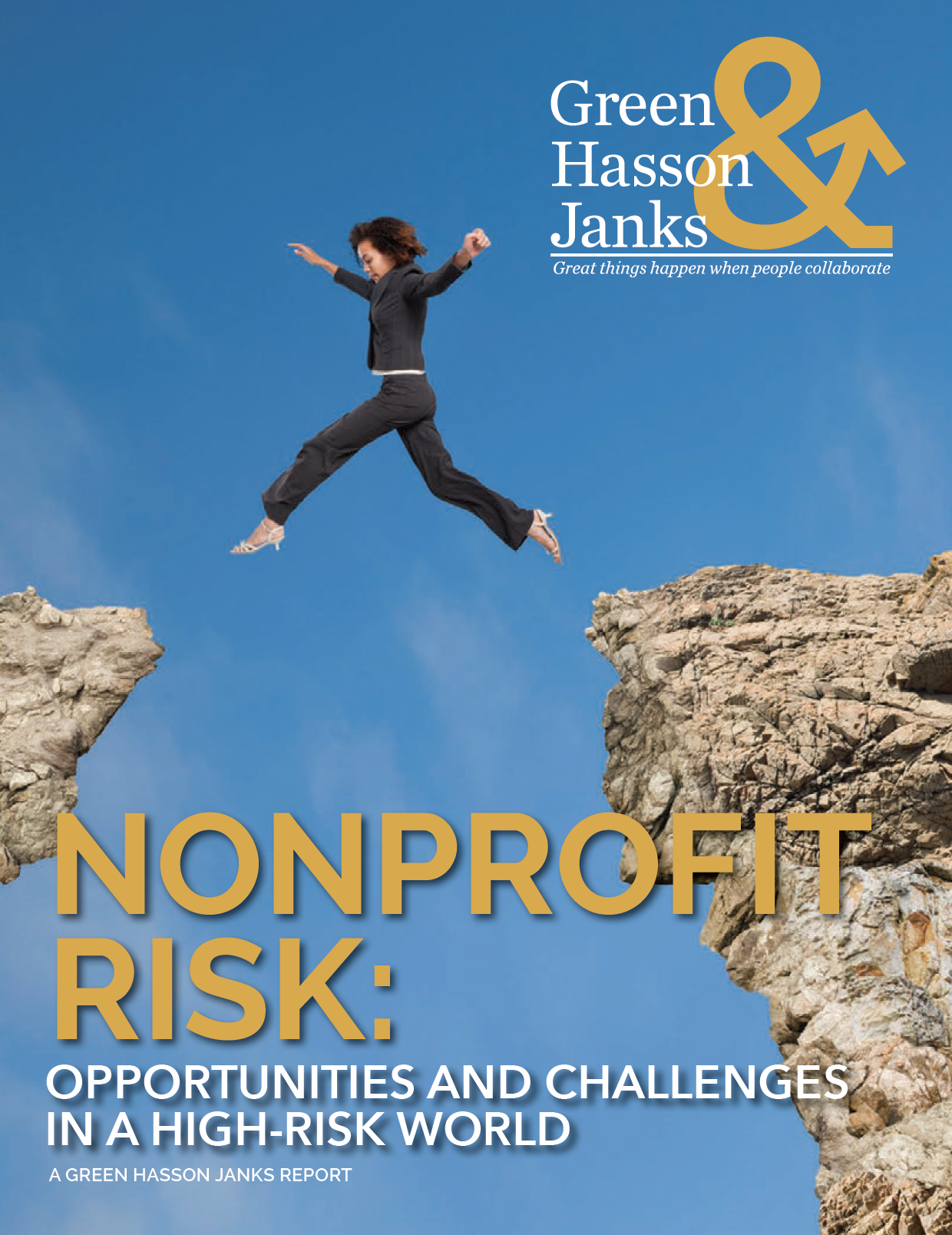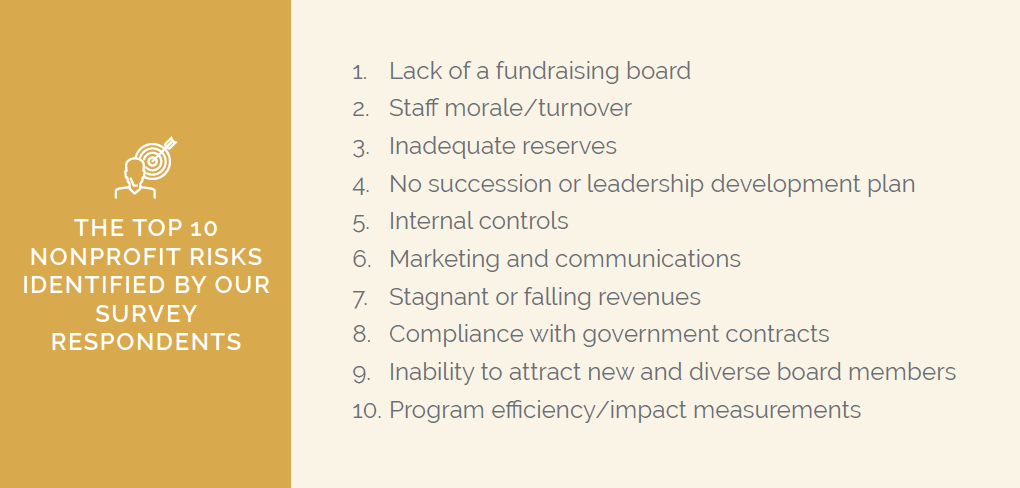







Risk concerns are top of mind for most nonprofits. Uncertain revenue streams, tight budgets, employee retention, board composition and more can all drive risks up to unacceptable levels.
In the course of our interviews, we identified a number of important risks that nonprofits are facing right now, and our subject matter experts talked candidly about how they approach those risks in their own organizations.
Board membership has a different meaning at various stages in nonprofit's development. Early-stage non-profits often have boards made up of friends, family and believers in the mission. As the organization matures, there comes a point where the board evolves and members take o more defined roles.
Nonprofits and their board members have real legal responsibilities. Broadly, they must follow the principles of corporation law.
Reputation gives a nonprofit credibility and inspires confidence in their work. Reputations are an asset. For nonprofits, reputational risk really means the potential loss of confidence in the organization.
Creating a "best places to work" and a culture of engaged and motivated trained staff and volunteers is imperative for nonprofits. With limited time and resources to recruit, it takes a real commitment to talent for a nonprofit to thrive.
Any nonprofit organization needs a vision and a strategy for getting there. Usually this starts with a founders passion or an important issue - or both. As organizations grow, however, they need to take a more formal approach. A strategic planning process defines strategies that will help a nonprofit achieve its mission.The organizations leadership, staff, and board must engage in the process. The desired outcome is measurable goals, approved priorities for implementation, and a commitment to reviewing and updating strategies on an ongoing basis.










